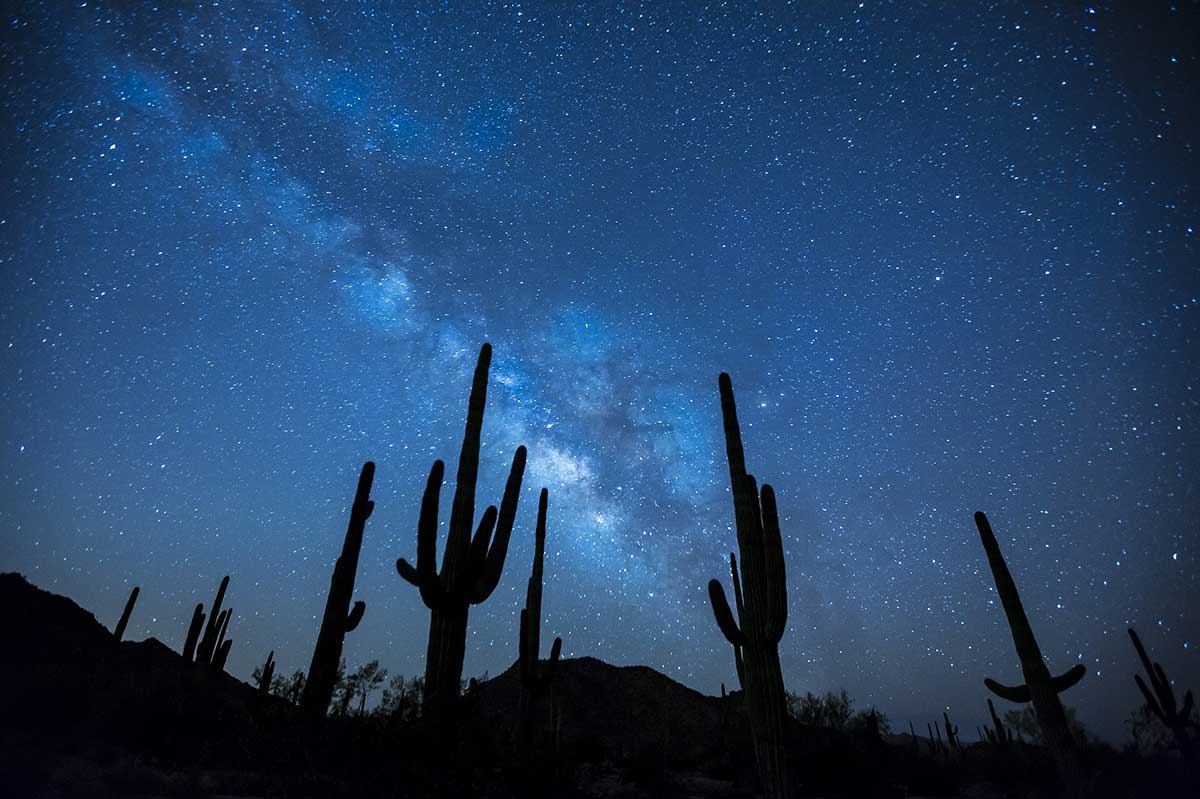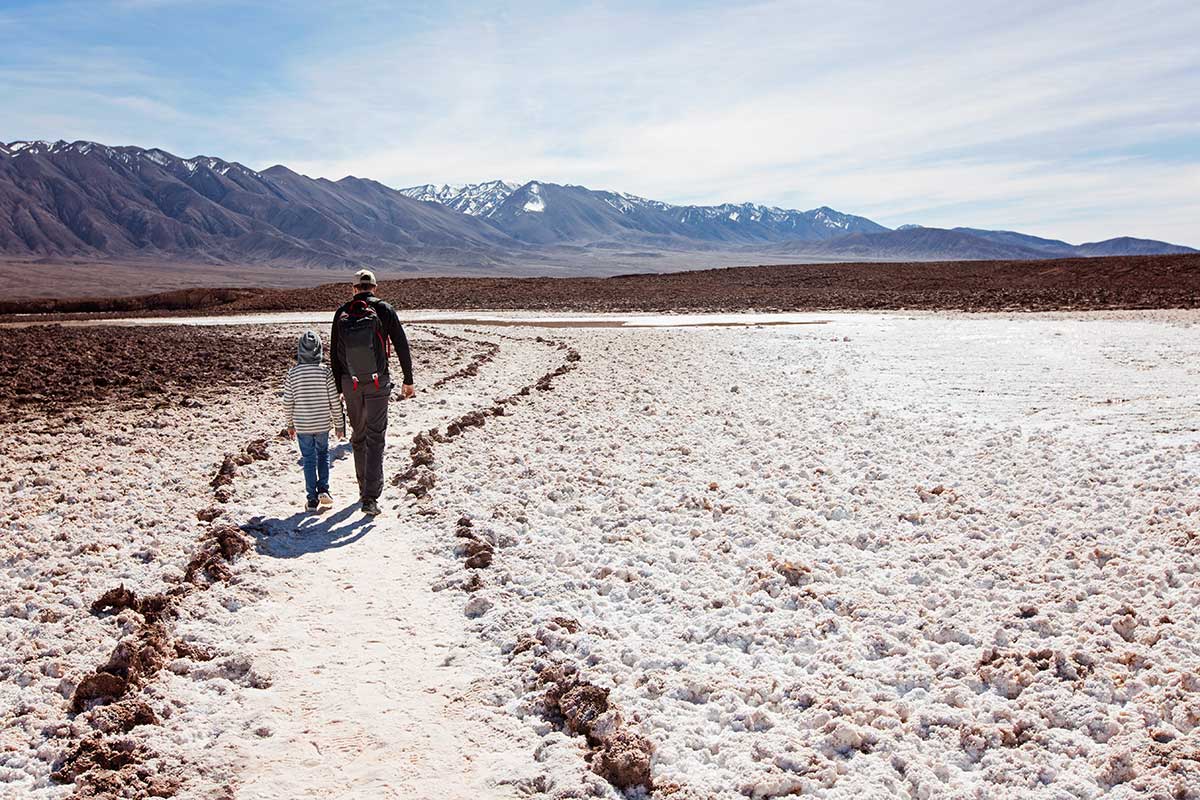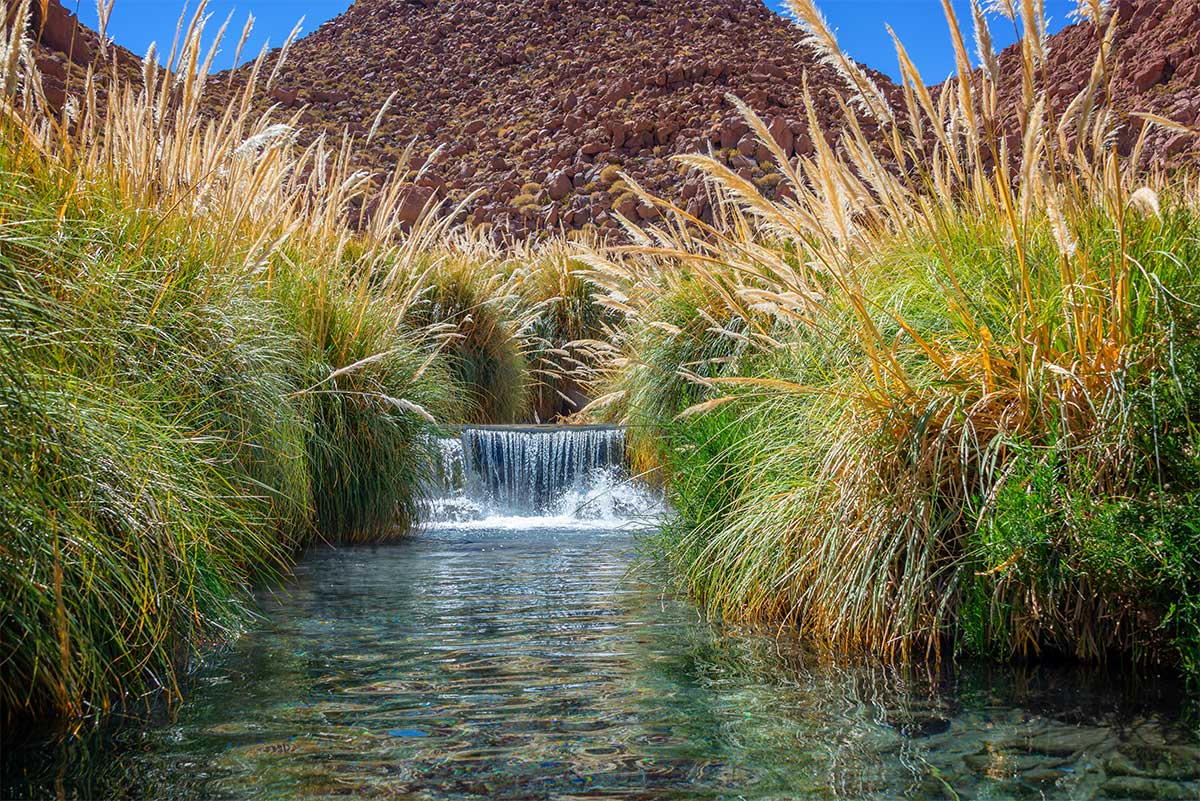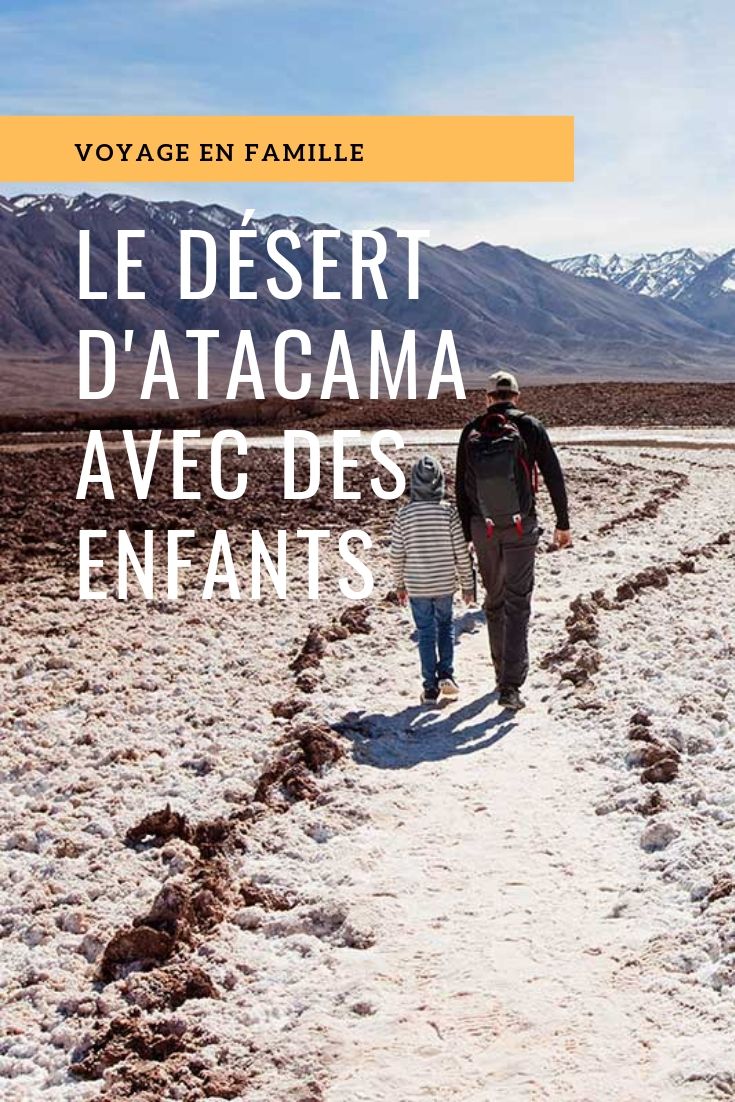The Atacama Desert with the family
Published on 17 déc. 2024
The Atacama Desert, located in the far north of Chile, is the driest and highest desert in the world! It stretches across four Chilean regions and part of southern Peru, from the Pacific Ocean to the foothills of the Andes.
In the middle, there is a small oasis, San Pedro de Atacama, one of the few inhabited areas in this desert region and the starting point for discovering the natural treasures of this Chilean area. It is, of course, an essential stop during a family trip to Chile.
What to do in San Pedro de Atacama?
San Pedro has managed to keep its charm despite the influx of tourists.
Perched at 2,450 meters, the village of San Pedro de Atacama can surprise you with its climate. In summer (from November to March), it is hot during the day and the nights are mild. In winter (from June to August), the days are pleasant, but the nights are cold with temperatures that can be negative.
On the main street of the village, you will find most of the local agencies in the region. If you have not chosen a tailor-made trip with a guide, do not hesitate to contact a local expert who is competent for the various activities to do. They will be essential to explain how the Andean landscape was formed, differentiate the flamingos of the lagoons, teach the local medicinal use of plants, and tell the pre-Hispanic history of the region!
The Valley of the Moon
Easily accessible from San Pedro de Atacama, the Valle de la Luna is only 13 km from the village. Some brave people go there by bike, but be careful, if you want to admire the sunset, prefer another means of transportation.
The Valley of the Moon, as its name suggests, gives you the impression of being on another planet. Dunes, canyons, ravines, and rocky peaks have formed here over millennia. It is a unique landscape in the world that will delight photographers.
The temperature range is large between day and night. So remember to bring warm clothes to cover yourself as soon as the sun sets.
Because it would be a shame to miss the extraordinary show at the end of the day. The desert and the mountains then take on incredible colors, which change every moment.
This excursion will delight the whole family and teenagers can jump on a sandboard to slide down the sand dunes. Lots of laughs are in store.
Stroll through a grandiose landscape between dunes and mountains.
Near the Valley of the Moon is the Valley of Death. Visit the Valley of Death in the early morning, the light is much more beautiful than in the late afternoon and you will quickly be in the shade. The view of the Valley of Death from the cornice of the Cordillera de la Sal is splendid.
See this post on Instagram
A post shared by Armando De Giácomo (@armando.degiacomo) on August 11, 2018 at 3:46 PDT
Observation of the southern sky
Northern Chile is probably the most exceptional region on Earth for stargazing thanks to the absence of light pollution. The sky is extremely pure. It is no coincidence that most of the world's largest telescopes have been installed in this region.
The Chileans have understood this well and dozens of agencies in San Pedro offer tours to observe the stars.

A few dozen kilometers from San Pedro, at 5,000 meters altitude, on the Chajnantor plateau, is the international scientific observatory Alma, the largest network of radio telescopes in the world! The center is accessible to visitors, by reservation only, on Saturday and Sunday mornings. Fortunately, other observatories welcome tourists eager to discover the sciences of the universe and it is not necessary to go up to 5,000 meters!
The Altiplanic lagoons, treasures of the Atacama Desert
A few kilometers south of San Pedro, the Atacama salt flat, the largest salt desert in Chile and the 6th largest in the world, awaits you.

But if you push your exploration of the Atacama Desert a little further, a natural gem awaits you!
150 km from San Pedro, discover the Altiplanic lagoons with the Sala de Talar and las Piedras Rojas (red stones).
For many travelers, this is the most beautiful excursion from the village. You will discover an incredible palette of colors and a breathtaking view from the Paso Sico track. Lose yourself in the immensity of the Chilean Andes in the heart of a breathtaking volcanic landscape.

The El Tatio Geysers
Be careful, if you are traveling with children, the site is located at 4,300 m altitude and the visit is usually done at dawn to better appreciate the steam explosions (before 6 a.m.). The geysers are about 100 km from San Pedro.
If you are allergic to crowds, come in the afternoon. There will be less steam, but you will be alone! The best time to admire the geysers is during the southern winter (June, July).

Las siete lagunas or las lagunas escondidas
The “hidden lagoons” of Baltinache get their name from the fact that they are quite isolated, in an area with very little traffic.
They are located 58 km from San Pedro de Atacama, at an altitude of 2,300 m. Go there rather in the afternoon. In recent years, the site's attendance has increased, but it is still reasonable. This can be an alternative to the laguna Ceja if you prefer to be more peaceful.
The salt concentration is very high, remember to bring water to rinse yourself and above all do not put your head in the water.
Las Lagunas Escondidas de Baltinache, el secreto de Atacama. Known for their floating effect due to the amount of salt in the water (7 times saltier than the sea). pic.twitter.com/fBC2su46UV
— Turismo en Chile (@TurismoEnChile) September 8, 2018
If you are traveling with children under 6 years old, prefer a swim at the Puritama hot springs. They are located about thirty kilometers from San Pedro and will delight the youngest: five natural pools at a perfect temperature of 33 degrees. Of course, you will find more people there than at the hidden lagoons, but the environment is very pleasant, with lush vegetation and suitable facilities.

Want to learn more about the Atacama Desert?
This video will bring back memories for some and the children will be unbeatable on the Atacama Desert during your family stay in northern Chile!

A website by
Customize your trips with Quotatrip and receive tailor-made offers directly in your inbox.